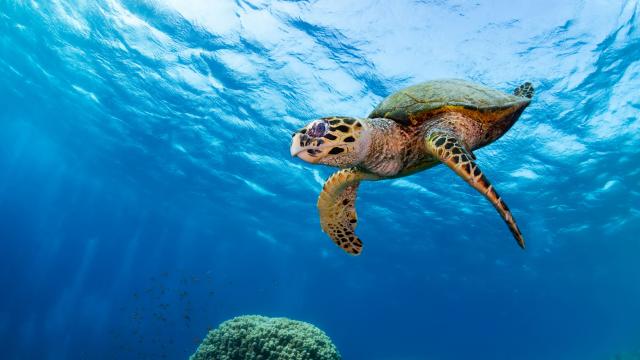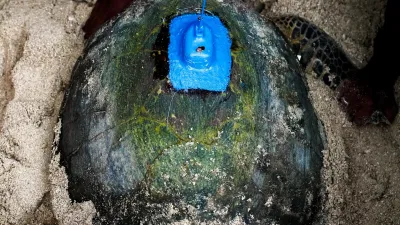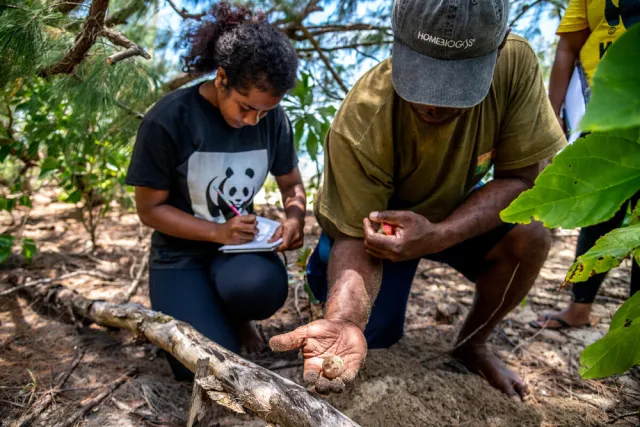
Project overview
Across Fiji, WWF works with a network of Dau ni Vonu, community turtle guardians, who combine their traditional knowledge of turtles with the training and skills required to monitor their status and health.
Each year, they conduct turtle nesting surveys, collecting data including species identification, number of successful and unsuccessful hatchlings, GPS coordinates of nest sites, and any threats to the relevant sites. This year, we took the opportunity to satellite tag ten hawksbill turtles during the survey.
The expedition took place across three small islands, Kavewa, Katawaqa and Nukuvadra, off the northern coast of Vanua Levu in Fiji's Macuata Province. These islands are significant for their ecological importance and the community-led conservation efforts aimed at protecting marine turtles. The local communities of Nadogo District, declared Nukuvadra and Katawaqa islands and their surrounding waters, a community marine protected area and turtle sanctuary.
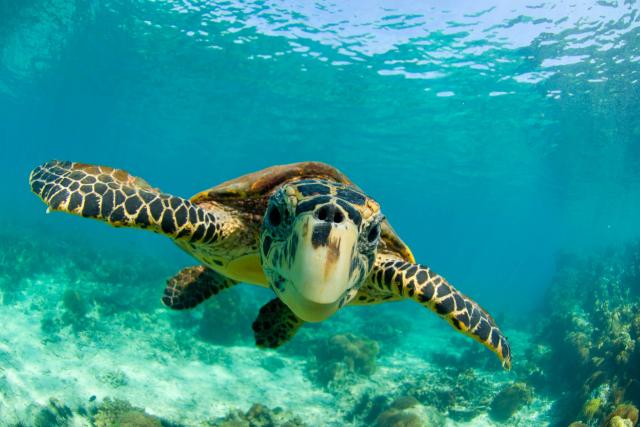
Why we are doing it
6 out of the 7 species of marine turtle are threatened with extinction. Some populations have dramatically declined by as much as 90% in recent decades. This is due to a range of threats including loss of their nesting habitats, accidental capture in fishing gear, and being taken from the wild for their meat, eggs, and shells.
Hawksbill turtles don’t mature until around 20 – 35 years old. And with only around one in 1,000 turtle hatchlings surviving to adulthood, it will take a long time for any populations to recover. Hawksbill turtles play a crucial role in maintaining the health of coral reefs. They are the only marine turtle that can survive mainly on sponges as their distinctive beak-like mouth allows them to reach into holes and crevices in the reefs to reach them. If left unchecked, these fast-growing sponges can overtake a reef and smother the coral. Hawksbills are therefore vital to maintaining healthy reefs and benefit all the marine life that depend on them for food and shelter.
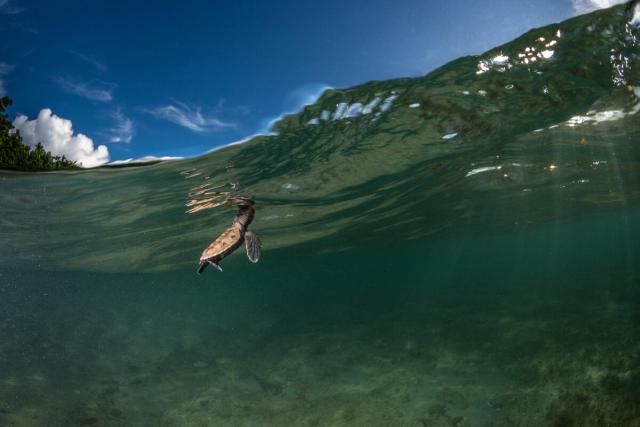
Project impact
Marine turtle conservation efforts have traditionally focused on nesting grounds as it's easy to see and monitor the turtles when they come ashore. However, turtles spend most of their lives at sea, with females only returning to the beach they hatched from every few years once they are fully mature. They may nest 3-5 times during one season and the data from these tags will tell us where they go while they are near their nesting beach, when they leave to migrate back to their feeding grounds, which route they take, and where those feeding grounds are.
We need data on these migration routes and a better understanding of where they forage in order to more effectively protect them and their food sources. It’s likely that hawksbill turtles that nest in Fiji travel through and feed in waters of other countries, such as Papua New Guinea and the Solomon Islands. It’s vital that each country takes joint responsibility for managing their turtle populations and that conservation efforts are more efficient and cover the regional scale. We’ll track these turtles for five months and then analyse the data and use the results to improve the fate of these amazing animals.
